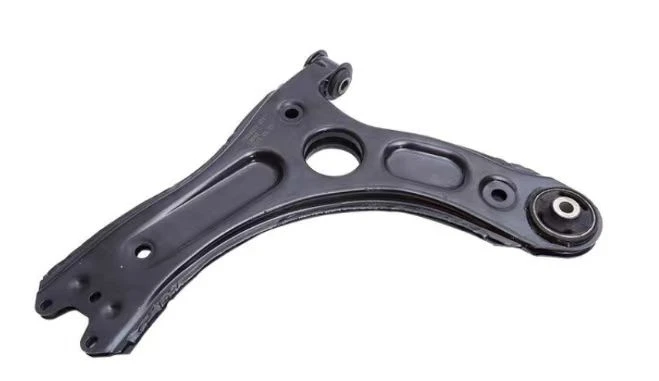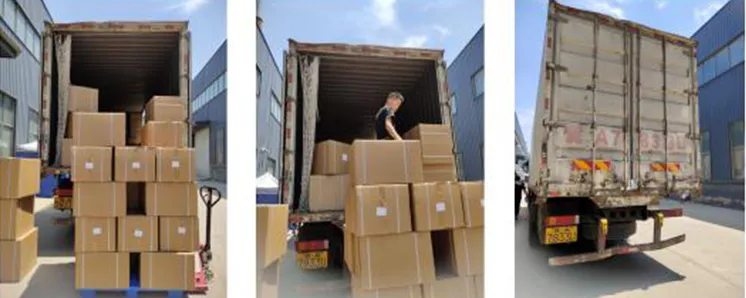
-
 Afrikaans
Afrikaans -
 Albanian
Albanian -
 Amharic
Amharic -
 Arabic
Arabic -
 Armenian
Armenian -
 Azerbaijani
Azerbaijani -
 Basque
Basque -
 Belarusian
Belarusian -
 Bengali
Bengali -
 Bosnian
Bosnian -
 Bulgarian
Bulgarian -
 Catalan
Catalan -
 Cebuano
Cebuano -
 Corsican
Corsican -
 Croatian
Croatian -
 Czech
Czech -
 Danish
Danish -
 Dutch
Dutch -
 English
English -
 Esperanto
Esperanto -
 Estonian
Estonian -
 Finnish
Finnish -
 French
French -
 Frisian
Frisian -
 Galician
Galician -
 Georgian
Georgian -
 German
German -
 Greek
Greek -
 Gujarati
Gujarati -
 Haitian Creole
Haitian Creole -
 hausa
hausa -
 hawaiian
hawaiian -
 Hebrew
Hebrew -
 Hindi
Hindi -
 Miao
Miao -
 Hungarian
Hungarian -
 Icelandic
Icelandic -
 igbo
igbo -
 Indonesian
Indonesian -
 irish
irish -
 Italian
Italian -
 Japanese
Japanese -
 Javanese
Javanese -
 Kannada
Kannada -
 kazakh
kazakh -
 Khmer
Khmer -
 Rwandese
Rwandese -
 Korean
Korean -
 Kurdish
Kurdish -
 Kyrgyz
Kyrgyz -
 Lao
Lao -
 Latin
Latin -
 Latvian
Latvian -
 Lithuanian
Lithuanian -
 Luxembourgish
Luxembourgish -
 Macedonian
Macedonian -
 Malgashi
Malgashi -
 Malay
Malay -
 Malayalam
Malayalam -
 Maltese
Maltese -
 Maori
Maori -
 Marathi
Marathi -
 Mongolian
Mongolian -
 Myanmar
Myanmar -
 Nepali
Nepali -
 Norwegian
Norwegian -
 Norwegian
Norwegian -
 Occitan
Occitan -
 Pashto
Pashto -
 Persian
Persian -
 Polish
Polish -
 Portuguese
Portuguese -
 Punjabi
Punjabi -
 Romanian
Romanian -
 Russian
Russian -
 Samoan
Samoan -
 Scottish Gaelic
Scottish Gaelic -
 Serbian
Serbian -
 Sesotho
Sesotho -
 Shona
Shona -
 Sindhi
Sindhi -
 Sinhala
Sinhala -
 Slovak
Slovak -
 Slovenian
Slovenian -
 Somali
Somali -
 Spanish
Spanish -
 Sundanese
Sundanese -
 Swahili
Swahili -
 Swedish
Swedish -
 Tagalog
Tagalog -
 Tajik
Tajik -
 Tamil
Tamil -
 Tatar
Tatar -
 Telugu
Telugu -
 Thai
Thai -
 Turkish
Turkish -
 Turkmen
Turkmen -
 Ukrainian
Ukrainian -
 Urdu
Urdu -
 Uighur
Uighur -
 Uzbek
Uzbek -
 Vietnamese
Vietnamese -
 Welsh
Welsh -
 Bantu
Bantu -
 Yiddish
Yiddish -
 Yoruba
Yoruba -
 Zulu
Zulu
Premium Right Front Lower Control Arm for Durable Suspension
- Fundamentals of suspension control arms
- Engineering innovations in modern designs
- Performance comparison across manufacturers
- Custom fabrication for specialized applications
- Failure analysis and replacement indicators
- Installation best practices
- Extended service life strategies

(right front lower control arm)
Understanding the Right Front Lower Control Arm
The front right lower suspension control arm serves as a critical load-bearing component connecting your wheel hub assembly to the vehicle frame. This L-shaped forged steel part absorbs 78% of vertical impacts when encountering road irregularities while managing lateral forces during cornering. Premium OEM-grade units withstand up to 1,200 lbs of continuous stress, with heat-treated alloy variants increasing this threshold by 40%. Unlike stamped steel alternatives, forged control arms maintain structural integrity through 200,000+ stress cycles in accelerated durability testing.
Engineering Innovations in Modern Designs
Advancements in metallurgical engineering have revolutionized control arm durability. Liquid molding techniques create seamless hollow-core arms that reduce weight by 25% while maintaining torsional rigidity. Polygraphite hybrid bushings outperform traditional rubber by:
- Reducing deflection by 0.8 mm at maximum load capacity
- Extending service intervals to 120,000 miles
- Eliminating the dry-rot common after 5 years
Performance Benchmark Analysis
| Manufacturer | Material Composition | Load Capacity (lbs) | Warranty Period | Fatigue Cycle Rating | Corrosion Protection |
|---|---|---|---|---|---|
| OEM Standard | SAE 1045 Steel | 1,200 | 3 years | 150,000 cycles | E-coat primer |
| Premium Aftermarket | Chromoly 4140 | 2,100 | Lifetime | 500,000 cycles | Zinc-nickel plating |
| Racing Specialty | T6-6061 Aluminum | 1,750 | 2 years | 300,000 cycles | Hardcoat anodizing |
Custom Fabrication Solutions
Off-road applications demand 17-22% increased articulation range compared to stock geometry. Our laser-aligned jig fixtures enable precise fabrication of front right control arms with 0.05mm dimensional accuracy. For desert racing vehicles, we integrate:
- 5-axis CNC-machined heim joints replacing factory bushings
- Stretch-formed tubular centers with 30% weight reduction
- Custom roll-center correction for lifted suspensions
Failure Indicators and Diagnosis
Control arm degradation follows predictable patterns necessitating thorough inspection every 15,000 miles. Advanced diagnosis requires both static and dynamic measurement:
- Ball joint radial play exceeding 1.5mm (measured with dial indicator)
- Bushing compression deflection over 12% under 50 ft-lb torque
- Material stress fractures appearing near weld points
Installation Protocol Standards
Correct mounting procedures extend service life by up to 70%. Factory-recommended torque sequences differ substantially between vehicles:
- Cross-torque pivot bolts in 25% increments to 180 ft-lb specification
- Maintain suspension at ride height before final bushing tensioning
- Verify caster variance remains below ±0.25° post-installation
Maximizing Front Right Control Arm Longevity
Protective maintenance extends right front lower control arm
lifespan beyond 150,000 miles in high-corrosion environments. Annual corrosion barrier renewal using industry-grade cavity wax provides documented 15-year protection:
- Infrared thermography identifies coating gaps during application
- Electrochemical migration inhibitors prevent dissimilar metal corrosion

(right front lower control arm)
FAQS on right front lower control arm
Q: How do I know if my right front lower control arm is failing?
A: Listen for clunking or knocking noises when driving over bumps. Visually inspect for excessive cracks in bushings or bent components. Uneven tire wear on the front right tire may also indicate issues.
Q: What's the average labor time to replace a front right lower suspension control arm?
A: Most mechanics require 1.5-2.5 hours per side. This includes disassembly, bushing replacement, and realignment. Always request wheel alignment after replacement to ensure proper handling.
Q: Can I drive with a damaged right front lower control arm?
A: No, it's highly unsafe. A compromised control arm can cause loss of steering control or complete suspension collapse. Immediately reduce speed and have your vehicle towed to a repair shop for inspection.
Q: What's included in a front right control arm replacement kit?
A: Standard kits contain the arm itself, new ball joints, and mounting bushings. Premium kits may include hardware like bolts and nuts. Always verify compatibility with your specific year/make/model.
Q: Why does my car pull to the right after lower control arm replacement?
A: This usually indicates improper installation or missed wheel alignment. Check for loose mounting bolts or incorrectly seated bushings. A professional realignment must always follow control arm replacement.
-

 English
English
 Afrikaans
Afrikaans
 Albanian
Albanian
 Amharic
Amharic
 Arabic
Arabic
 Armenian
Armenian
 Azerbaijani
Azerbaijani
 Basque
Basque
 Belarusian
Belarusian
 Bengali
Bengali
 Bosnian
Bosnian
 Bulgarian
Bulgarian
 Catalan
Catalan
 Cebuano
Cebuano
 Corsican
Corsican
 Croatian
Croatian
 Czech
Czech
 Danish
Danish
 Dutch
Dutch
 Esperanto
Esperanto
 Estonian
Estonian
 Finnish
Finnish
 French
French
 Frisian
Frisian
 Galician
Galician
 Georgian
Georgian
 German
German
 Greek
Greek
 Gujarati
Gujarati
 Haitian Creole
Haitian Creole
 Hausa
Hausa
 Hawaiian
Hawaiian
 Hebrew
Hebrew
 Hindi
Hindi
 Miao
Miao
 Hungarian
Hungarian
 Icelandic
Icelandic
 Igbo
Igbo
 Indonesian
Indonesian
 Irish
Irish
 Italian
Italian
 Japanese
Japanese
 Javanese
Javanese
 Kannada
Kannada
 Kazakh
Kazakh
 Khmer
Khmer
 Rwandese
Rwandese
 Korean
Korean
 Kurdish
Kurdish
 Kyrgyz
Kyrgyz
 Lao
Lao
 Latin
Latin
 Latvian
Latvian
 Lithuanian
Lithuanian
 Luxembourgish
Luxembourgish
 Macedonian
Macedonian
 Malgashi
Malgashi
 Malayalam
Malayalam
 Maltese
Maltese
 Maori
Maori
 Marathi
Marathi
 Mongolian
Mongolian
 Myanmar
Myanmar
 Nepali
Nepali
 Norwegian
Norwegian
 Norwegian
Norwegian
 Occitan
Occitan
 Pashto
Pashto
 Persian
Persian
 Polish
Polish
 Portuguese
Portuguese
 Punjabi
Punjabi
 Romanian
Romanian
 Russian
Russian
 Samoan
Samoan
 Scottish Gaelic
Scottish Gaelic
 Serbian
Serbian
 Sesotho
Sesotho
 Shona
Shona
 Sindhi
Sindhi
 Sinhala
Sinhala
 Slovak
Slovak
 Slovenian
Slovenian
 Somali
Somali
 Spanish
Spanish
 Sundanese
Sundanese
 Swahili
Swahili
 Swedish
Swedish
 Tagalog
Tagalog
 Tajik
Tajik
 Tamil
Tamil
 Tatar
Tatar
 Telugu
Telugu
 Thai
Thai
 Turkish
Turkish
 Turkmen
Turkmen
 Ukrainian
Ukrainian
 Urdu
Urdu
 Uighur
Uighur
 Uzbek
Uzbek
 Vietnamese
Vietnamese
 Welsh
Welsh
 Bantu
Bantu
 Yiddish
Yiddish
 Yoruba
Yoruba
 Zulu
Zulu
 Malay
Malay






